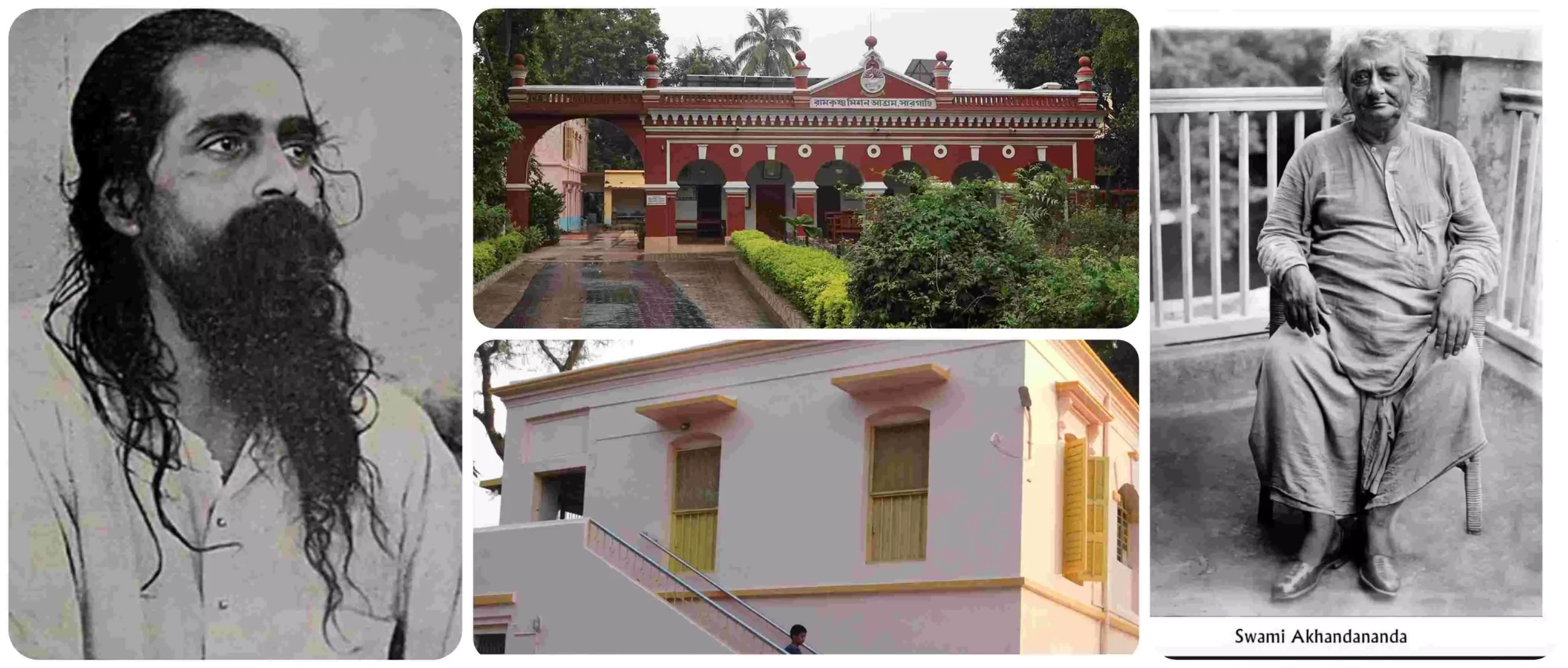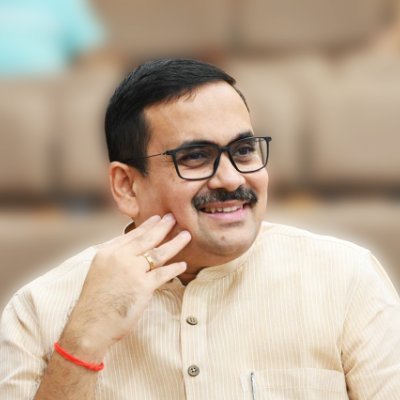Inspired by RSS’ ideology of embracing national devotion and self-sacrifice, MS Golwalkar sought guidance from Swami Akhandananda at the Ramakrishna Mission—an event that’d infuse spirituality in his national service
On the RSS evoking deshbhakti, Professor MA Venkata Rao writes in his introduction to Shri Guruji’s opus ‘Bunch of Thoughts’, ‘it teaches loyalty and devotion to the national society in the national homeland under the image of the Mother. The unity and solidarity of the Motherland is taught to claim the highest sacrificial devotion from the citizen body.’ And ‘whoever enters into this spirit of devotion to the nation as a spiritual unity of land and people are Indians or Hindus in essence…’
Self-effacement, sacrifice, unalloyed patriotism and adherence to Rashtra-dharma, undiluted commitment to social equality and equity, to social uplift and empowerment, a deeper commitment and accountability to India’s present and to her future, to her rise and resurgence, an unmixed dedication to the resurgence of the Hindu consciousness, is, if one could very imperfectly describe it, the Sangh’s driving essence and its philosophical core.
In ordinary Swayamsevaks like us, Sarsanghchalak Dr Mohan Bhagwat’s Vijaya Dashami address never fails to evoke emotions. Past episodes in the unbroken history of the RSS, which have been defining in its growth and evolution, also come to mind. One such dimension or episode never fails to inspire. It has inspired generations and legions of Swayamsevaks and all those who read and heard of it. It was a foundational episode in the Sangh’s journey and laid a deep and unshakable foundation. It lit a spark that linked the RSS permanently and perennially to the essence of India’s regeneration and rise. Let us revisit it.
In the winter of 1936, MS Golwalkar, then 30 years old arrived for initiation at the Sargachi Ramakrishna Ashram of Swami Akhandananda – Gangadhar Gangopadhyay, a co-disciple of Swami Vivekananda – then the third President of the Ramakrishna Mission.
An intense urge to be initiated into Sannyasa and to take up the spiritual life under the tutelage of a realized Master, led Golwalkar to the Sargachi Ramakrishna Ashram, ten kilometres south of Behrampore town in Murshidabad, then undivided Bengal. One of Golwalkar’s leading biographers CP Bhishikar writes of Shri Guruji’s intense ‘desire for self-realisation through single-minded Sadhana at the feet of a realized a Guru’ and of his setting out ‘in search of the Guru.’
In 1933, Golwalkar had returned to Nagpur from Kashi, where he was teaching at the Banaras Hindu University. Golwalkar lived for a total of five and a half years in Kashi, studying for four and teaching for one and a half-year. Veteran pracharak, profound thinker and prolific author late Ranga Hari, in his masterly biography of Shri Guruji, ‘The Incomparable Guru Golwalkar’, very captivatingly describes Shri Guruji’s Benares Hindu University (BHU) phase. Of Golwalkar’s job at BHU, Ranga Hari cites his own letter written to an acquaintance back in Mumbai, ‘I came suddenly to the Department of Zoology of Benares Hindu University on the 16th of last month [August, 1931], wrote Golwalkar, ‘I have got a temporary job here. I received a telegram from the office of the university and had to start off immediately. I am working as a demonstrator in the Department of Zoology here. This is a temporary appointment for a vacant post.’ The assignment, writes Ranga Hari, the conscientious chronicler, ‘was given due to a long leave taken’ by one demonstrator BL Pawar. Golwalkar ‘was selected on the basis of his being an ex-student of the university’, with a salary of Rs 100. He put up at the nearby ‘Gajanand Lodge’, outside the university campus and, ‘people started calling a teacher a “professor”, thus this new appointee came to be known as Professor Golwalkar.’
This was a common habit in those days, anyone in teaching or linked to education was conferred the honorific of ‘professor’ by people, out of deference. There was no strict educational protocol à la UGC norms and status. Golwalkar never claimed he was a ‘professor’, nor his colleagues and co-workers later. In BHU, Golwalkar was a much sought after teacher by students, a large number of whom would flock to him for academic guidance and assistance. It was here in Kashi that young ‘Professor Golwalkar’, got drawn to Sangh work.
Back in Nagpur, over the next few years, besides attending to some domestic responsibilities, Shri Guruji was being increasingly drawn into the workings of the Sangh, attracted by Doctorji. It was an intense phase. A many-layered and many-sided formative phase in Shri Guruji’s life. Yet despite getting sucked deeper into the vortex of RSS work, which was founded less than a decade earlier, Golwalkar’s identification with its work then, Bhishikar noted, ‘was not yet complete’ and he ‘leaned more towards the Ramakrishna Ashram’ in Nagpur and developed a close relationship with its head Swami Bhaskareshwarananda.
Swami Akhandananda, had a liking for Bhaskareshwarananda, and in the middle of November 1934, on his insistence, stopped by at Nagpur on his way back from Mumbai, and initiated some followers. To the appeal of some college students and youngsters for initiation, he asked all of them to come to the Ashram at Sargachi. Golwalkar must have had his first darshan of his future Guru at Nagpur. Swami Amoortananda – Amitabh Maharaj – of the Nagpur Ramakrishna Mission, when he saw Golwalkar in those days, felt as if he was ‘face to face with a spiral of fire, covered with some ash. Once this ash was removed; his personality would certainly shine forth glowing with all round radiance.’ It was with Amitabh Maharaj that Golwalkar would strike a profoundly spiritual camaraderie that stuck a lifetime.
The Ashram at Sargachi had been in existence for about 40 years by the time Golwalkar came seeking his Guru. Akhandananda had halted his peregrinations in Murshidabad in 1897 when he saw the havoc famine had wreaked in the region. His biographer Swami Annadananda writes of how as he ‘proceeded towards Murshidabad, the Swami could not but notice the emaciated bodies of the cowherd boys he encountered. He learned from them about the famine raging in that area. Their extreme distress moved Akhandananda deeply.’
A series of spiritual experiences convinced Swami Akhandananda that it was the Goddess Annapurna who wanted him to stay back and serve the distressed in this region. In his classic Bangla opuscule ‘Swami Akhandanander Smriti Sanchay,’ Swami Niramayananda describes this phase in ‘Baba’s’, as Akhandananda was called by his disciples and devotees, own words. ‘I came here under the instructions of Thakur’ [Sri Ramakrishna]. ‘In the land of famine, Thakur is Ma Annapurna…So his temple was set up…in the land of famine, real dharma is to feed and clothe, then to spread education and healthcare…’
‘A site was selected on the highway at the village of Sargachi’ for setting up the Ashram. Swami Annadananda records that when Mr Levinge, the District Magistrate, ‘curiously asked,’ the Swami, ‘Why do you make your Ashrama so far from the town, in a village where there are many inconveniences’, Swami Akhandananda replied, ‘We can be near the toiling peasants and alleviate their distress to whatever small extent it is possible. They too, can benefit by observing our method of work.’
Swami Akhandananda’s ‘sacred aim in life,’ writes his biographer, ‘was to serve not only orphans, but also the poor and the illiterate. Swamiji [Vivekananda] had written to him: “May the poor, the ignorant, be your gods.” Many often saw him run into the fields, seeing the tillers in sunhat ploughing the fields, and himself ‘put one of their hats, and, with tears in his eyes, pray for their well-being.’ Passersby ‘would stand still in astonishment at the sight. But how else could he express the sorrows he felt at their distress and his wish to help them?’
Vivekananda wrote to Akhandananda from Almora, ‘I am getting detailed reports of you and getting more and more delighted. It is the sort of work which can conquer the world…Work, work, work, even unto death! Those that are weak must make themselves great workers, great heroes – never mind money, it will drop from heavens…It is the heart that conquers, not the brain. Books and learning, yoga and meditation and illumination – all are but dust compared with love…This indeed is worship, worship of the Lord in the human tabernacle.’
Swamiji’s letter, writes the scholar-monk Swami Chetanananda in his monumental narration of the ‘Life Stories of Sixteen Monastic Disciples of Sri Ramakrishna’, ‘increased Akhandananda’s spirit of service a thousandfold.’ Reminiscing of Swamiji’s letter, Akhandananda recalled that he read it over and over again ‘and gained fresh strength’ within, ‘Mantram va sadhayeyam shariram va patayeyam – I shall either carry out my purpose or lay down my body – this mantram filled my heart. Oh, into what a current of activity did I then submerge myself.’ Chetanananda remarks, how the ‘more Providence tested him’ the more Akhandananda successfully carried out his relief work.
To Vivekananda, Akhandananda was a ‘heroic soul’ for whom ‘fear and death’ were unknown, ‘he works with single-minded devotion for the good of the many, for the happiness of the many.’ Speaking to Akhandananda once, of his successful famine relief work in Mahula, Murshidabad, Vivekananda is said to have told him, ‘I saw the Master holding you by the hand at Mahula village. That is why you were so successful!’
To this ‘heroic soul’ thus, came Golwalkar, alighting in front of the road that led to the Sargachi Ashram, lined with eucalyptus trees which stood like sentinels emitting, as Swami Niramayananda described it, a ‘sweet-strong’ smell that was always carried far by the soft breeze.
(The views expressed are the author's own and do not necessarily reflect the position of the organisation)


